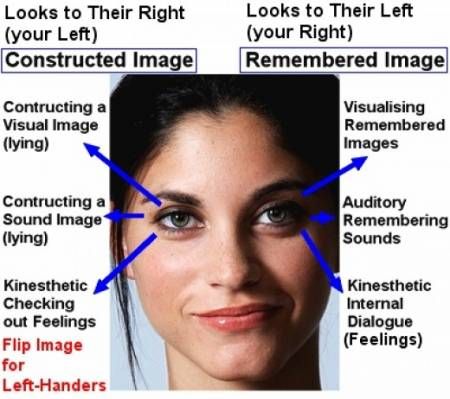If you work with or lead a team spotting a liar is a good skill to have. Here’s how…
There is nothing magic about Neuro-Linguistic Programming (NLP). The concept is quite simple. The body often responds in unconscious ways to verbal stimuli. The trick is that these gestures are almost impossible to control consciously.
Although it’s not 100% foolproof there are clear indicators. And with a bit of practice, you learn the shorthand code.
Lying and deception require different brain processes than telling the truth. When you’re telling the truth, you usually find a memory associated with the true answer and replay it with your vocal cords. However, when you’re lying, you not only need to process the truth and withhold it, your brain needs to do a whole host of extra processes.
This is how it works:
The frontal lobe cautions you that you do not want to reveal the truth
Your mind makes up the alternative answer (the lie) or sometimes recalls a false memory (if you have already planned the lie)
You need to concentrate on some level to deliver the lie without appearing deceptive
You need to gauge the reaction of the listener to see whether they believe it
Usually, you then try to change the subject or use body language to deter the person from pursuing that line of questioningNone of these processes occur when telling the truth. And naturally, with all these extra processes, parts of them start to show on the surface.
Facial signals to tell if someone is lying.
The first sign is the eyes. When the brain is “creating a picture” the eyes instinctively move up and to their right (your left), signifying access to the right hemisphere (creation) and visual cortex (pictures). This usually means they are constructing a picture in their head. If someone is recalling a picture (remembering something that they actually saw) then they would look up and to their left (your right).
The eyebrows rising towards the center of the forehead (where the arrow lands in the picture) is a sign of fear. This sign can occur during or immediately after a lie because they are scared that you will see through it.
Another sign of fear is the sides of the lips turning down. The muscles that control this action are very specific and it is almost impossible to consciously activate them without activating any other lip-related muscles.
This is my favorite sign, when someone touches their nose or lips, covers their mouth, or in some way touches their face during the telling of a lie. It is very common.
Here are some other ways to tell if someone is lying.
